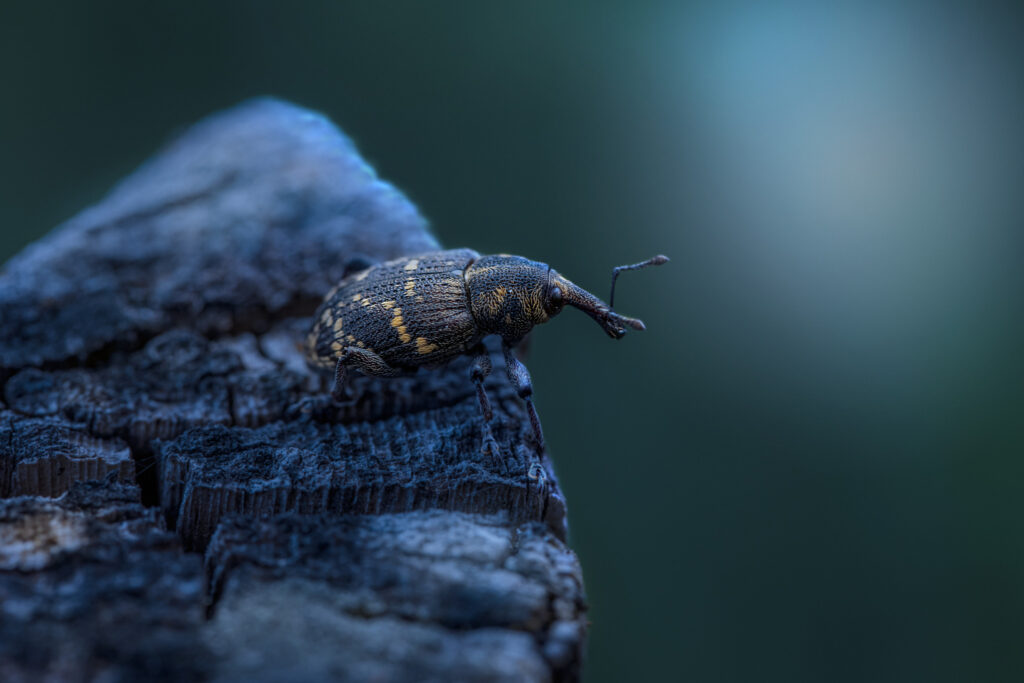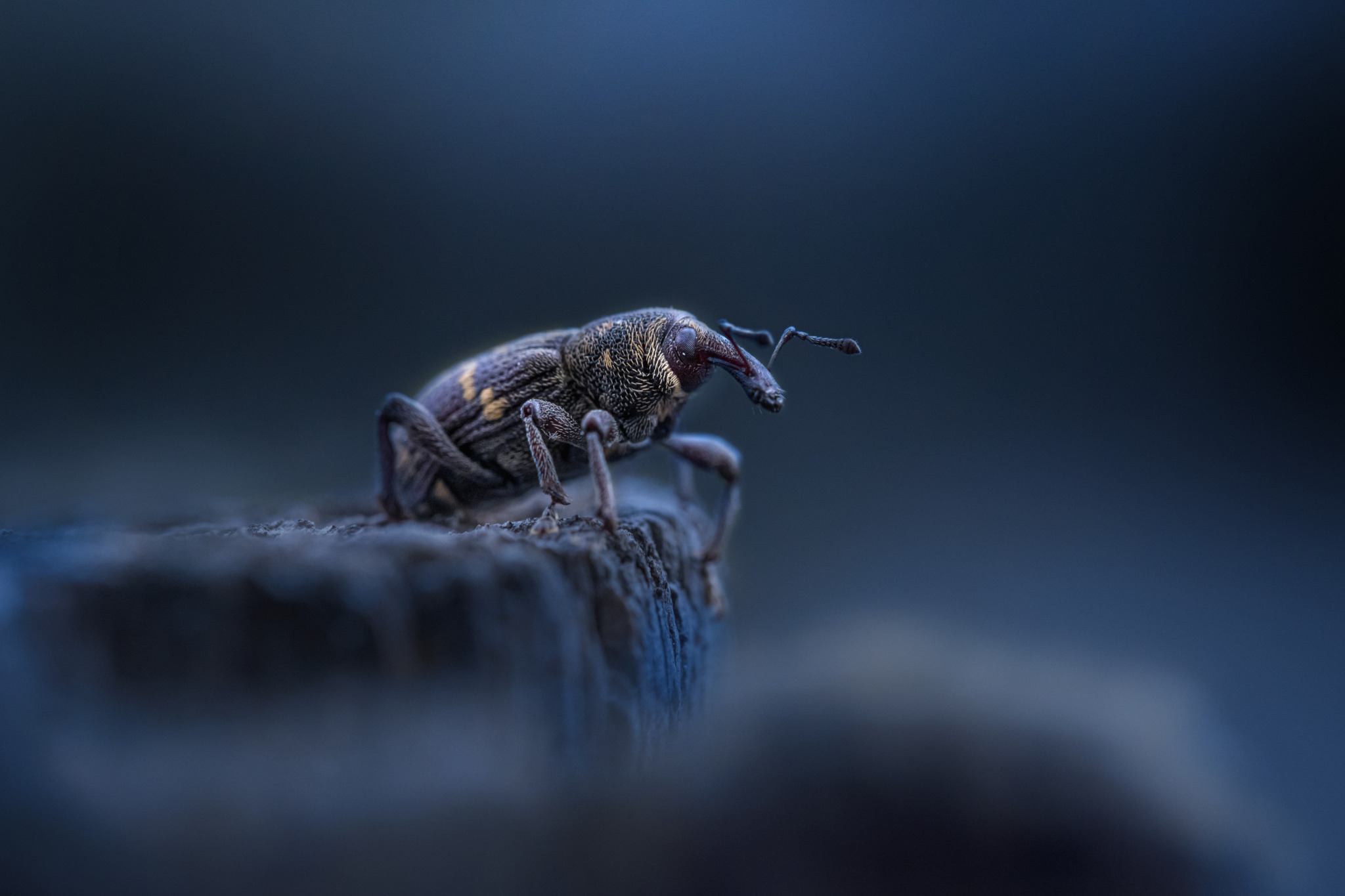
The Large Pine Weevil, also known by its scientific name Hylobius abietis, is a species of weevil belonging to the Curculionidae family. It is considered a significant pest in forestry, particularly in coniferous plantations throughout Europe.
Here are some key characteristics and features of the Large Pine Weevil:
- Appearance: Adult Large Pine Weevils are typically dark brown or black in color and have a distinctive long snout, which is characteristic of weevils. They range in size from 8 to 18 millimeters in length, with females generally being larger than males.
- Habitat: Large Pine Weevils primarily inhabit coniferous forests, where they can be found in both natural stands and planted forests. They are particularly problematic in young plantations of pine and spruce trees.
- Life Cycle: Large Pine Weevils have a one-year life cycle. Adults emerge from overwintering sites in early spring and feed on the bark of young trees. Females lay eggs in the soil at the base of trees, and the larvae, upon hatching, tunnel into the roots or the stem of the tree, causing damage. Larvae feed on the inner bark and cambium layer, which can lead to tree mortality, particularly in young saplings.
- Damage: Large Pine Weevils are significant pests because their feeding behavior can cause substantial damage to young trees, affecting growth and survival rates in forestry plantations. The damage they cause is often characterized by a characteristic “shepherd’s crook” shape at the top of affected trees, where the leader shoot has been killed.
- Management: Management of Large Pine Weevil populations typically involves a combination of cultural, mechanical, and chemical methods. These may include planting diverse tree species, maintaining a healthy forest ecosystem, utilizing physical barriers or traps, and applying insecticides to protect young trees from infestation.
Efforts to control Large Pine Weevil populations are crucial for maintaining the health and productivity of forest ecosystems, as well as sustaining the economic viability of forestry operations. Research into integrated pest management strategies continues to be important in mitigating the impact of these pests on tree populations.
Hylobius abietis or the large pine weevil is a beetle belonging to family Curculionidae. This species is widely regarded as the most important pest of most commercially important coniferous trees in European plantations. Seedlings planted or arising from natural regeneration (germinated seed-fall) after clear felling operations are especially at risk. The adult weevils cause damage by eating the bark of seedlings around the ‘collar’ of the stem, thus ‘ring-barking’ the tree seedling which usually results in its demise.
[Wikipedia]
Views: 1275
Subscribe to the newsletter:
